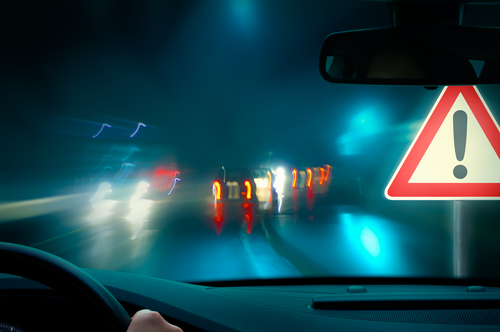How to
Tips for winter driving

Winter is nearly upon us, and while the prospect of cosy nights in front of the fire might be welcoming, driving in the dark is less appealing for many. Here are seven top tips about how to tackle driving during the winter.
Preparation is key
Getting your vehicle prepped for winter weather before it hits is one of the best ways to ensure you’re ready for whatever the Great British Winter may throw at you. Run through some basic maintenance checks on your car, including checking levels of antifreeze and windscreen washer fluid weekly and topping up when needed. Having the correct tyre pressure and tread is also an essential for safe driving during winter, as well as being a legal requirement.
Take your time
Plan all journeys and give yourself plenty of time to get to your destination. Delays and traffic jams are more common at this time of year, and don’t forget your departure may be delayed by needing to clear windscreens of ice.
Don’t stay in the dark about lights
You’ll be using dipped headlights more often, so it’s crucial to check these are in good working order. Have a family member or friend check all your lights, including indicators and fog lights, are working correctly whilst you’re in the vehicle. Also consider investing in a spare set of bulbs for your vehicle, you never know when they’ll come in useful.
Swot up
Long, balmy summer days can mean many of us forget what it is like to drive in darkness. Re-familiarise yourself with the Highway Code to ensure you’re driving by the book. Drivers often forget they don’t have to wait until its dark to use their dipped headlights, reduced daylight is reason enough. However avoid using full beam during daylight as other drivers may be dazzled.
Take care of other road users
The darkness can make it much harder to spot cyclists, horse riders and pedestrians, even if they’re wearing the correct hi vis gear. Be particularly mindful when driving near schools in the morning and around home time, keep your eyes peeled and always watch your speed when visibility is reduced. The Institute of Advanced Motorists report a sharp rise in road casualties following the clocks going back, with the number of pedestrians killed or seriously injured up 14 per cent on the monthly average.
Keep your distance
Judgement can be considerably impaired when it is darker, making it more difficult to correctly estimate the distance between your car and other vehicles. Increasing stopping distances and taking extra care when approaching an obstacle could be the difference between getting home safely and experiencing a collision.
Check your car battery
With increased use of car heaters and windscreen wipers, car batteries can come under serious strain during the winter months. According to some recovery services, flat batteries account for nearly one in three call outs. So it’s better to check them in advance than to discover its flat in the depths of winter, when you’re stuck at the roadside in freezing temperatures.
Steve Chelton is head of claims at Swinton Insurance
[article_related_posts]